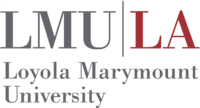“This dearth of Catholic faculty will soon worsen, because the most senior faculty are almost all Catholic. In the Department of Theological Studies as well as in philosophy, Catholics make up all four of the most recent retirements as well as the two most senior faculty. In the history department, two Jesuits recently retired as well as a religious brother. In mathematics, four of the five most senior members are Catholic. In classics, in the College of Business Administration, and in political science, Catholics constitute two of the three most senior members. Simply to maintain 24 percent would require that every retiring Catholic in the university be replaced with another Catholic.”
If the status quo continues, what will happen next? As LMU loses more Catholic faculty to retirement, the “secular majority view” on campus will grow even more strident. The campus will be increasingly shackled by a pall of orthodoxy, secular Group Think. Tenured faculty ultimately shape the destiny of a university because they outlast Deans, Provosts, and Presidents. If LMU’s faculty composition is like everywhere else, the university will eventually be like everywhere else.
“Symbolic ties will probably be the last to be cut. Already, the change in our university logo from a depiction of Sacred Heart Chapel to the current logo, below, is not without significance. Our current logo contains, we are told, subtle religious symbolism. Indeed, the symbolism is so understated as to be completely unnoticeable to the untutored eye, a perfect icon for the future of LMU.”

“Sacred Heart Chapel will need to move into greater conformity with wider university culture. The Eucharist will be permanently removed so that the space can be used for theatre, concerts, and yoga. The final argument about religious identity will be about whether distinctively religious art should remain. A compromise will be struck whereby the pieces considered offensive—such as the central crucifix and the statue of Mary—are removed, but the stained glass windows remain intact, a silent reminder of a long lost tradition.”
The essay, “Is Loyola Marymount University Losing its Catholic Identity,” is a must read for anyone who cares about LMU. It contains not just bad news, but numerous suggestions for increasing the Catholic identity of the faculty. Please post a link to this essay on social media and circulate it to friends and family. LMU needs to act decisively and quickly to prevent a further collapse in the percentage of Catholic faculty. Now is the time.


The author of the article has done an excellent job detailing the sad state of LMU’s commitment to its Catholic identity, but I don’t agree that the steps he has suggested have any prospect of improving the situation. Far more radical action is necessary if LMU is going to be renewed.
Inasmuch as the faculty is already predominantly non-Catholic, and the younger faculty even more so, LMU would have to hire almost exclusively Catholic faculty for decades just to begin to approach the 50% standard. There is no way that the faculty would stand for such a discriminatory hiring standard, and no way that the President and the Trustees would voluntarily pick a fight like that, much less enthusiastically wage it. “Hiring for mission” would at best be an insignificant gesture that would only serve to further obscure the depth of the crisis.
Similarly, it is unrealistic to expect that LMU, which is a regional, non-research university that does not offer doctoral-level graduate studies, can change its culture by endowing “Catholic” chairs. Without first creating an underlying framework that would give the holder of an endowed chair the requisite prestige and power to influence his or her field of study, the position would merely signify that the professor self-identifies as Catholic. That is pretty much where we are with respect to President Snyder, who is at least nominally Catholic but has no special background and perhaps no special interest in Catholic theology.
The problem as I see it is that LMU’s leadership has not merely been insufficiently attentive to its Catholic identity, it has been actively hostile to it. Let’s count the ways: (1) In recent years, LMU has had non-Catholics fill the positions of President, Provost, Dean of the College of Liberal Arts, and Chair of the Department of Theology; (2) under the new core curriculum, students are no longer required to take a class which primarily addresses Catholic theology or history, or of Western Civilization as a whole; (3) the administration buckled to the faculty’s absurd and offensive demand to compromise on the issue of insurance coverage for elective abortion; (4) LMU has recognized multiple student organizations and created support offices which seek to publicly validate sexual conduct which Church teaching holds to be immoral; and (5) several pro-abortion speakers, including Rosemary Radford Ruether (a founding board member of “Catholics for a Free Choice”) and Sarah Weddington (the lawyer who argued the pro-abortion side of Roe v Wade before the Supreme Court) have been welcomed to speak without criticism or challenge. And of course, from the very day it was announced, members of the LMU faculty have made clear their intention to disregard compliance with Ex Corde Ecclesiae.
I think it is beyond argument at this point that LMU can be a Catholic university, or a Jesuit one, but not both. Can anyone name a single Jesuit professor or administrator anywhere in the country under the age of 50 who would publicly agree with the Professor’s concerns and act on them if given the opportunity? I doubt that such a person exists. And as far as I know, no Jesuits were seriously considered (or even sought consideration) for the past two presidential vacancies at LMU.
Fortunately, the Jesuits have been realistic enough to understand that they are no longer capable of running LMU in any real sense, and have ceded control to a predominantly lay board of trustees. What LMU desperately needs, and may one day get, is a board which wakes up to the reality that a secularized LMU cannot survive. We are at best the third-ranked private university in Los Angeles (behind USC and Pepperdine), and probably not in the top ten if you count colleges like Occidental, Pomona, and Caltech. We cannot compete on value with any of the dozen or so UC’s and Cal States in Southern California, and the number of families who still value LMU’s nominal Catholic identity enough to pay $60K per year is sure to diminish.
Given the inertia inherent in the contemporary university model, it is hard to see how small incremental steps can make much of a difference, but there is at least one example of a radically positive transformation of a major university through the combined efforts of a steel-willed visionary president and a board that gave him the support he needed to make unpopular decisions. In 1971, Boston University was a relatively undistinguished commuter school on the verge of bankruptcy. The faculty, staff, and trustees were virtually unanimous in their assessment that BU, being in the shadow of Harvard, MIT, and Boston College, could at best aspire to stabilize its position as a modestly successful regional university. Fortunately for BU, its new president (John Silber) did not share their cramped vision. He immediately set out to make BU one of the best universities in the world, and in the span of his quarter-century tenure he ultimately succeeded. The changes he demanded – the implementation of a rigorous core curriculum, an emphasis on hiring exceptional teaching faculty, and a refusal to accede to political correctness – made him a polarizing figure who was reviled on campus and in the press. But he was also a man of unquestioned integrity who accepted responsibility for his own actions and expected others to do the same. I would encourage every college trustee and president (and faculty, student, and alumni) to study the life and work of John Silber.
The lessons of Silber and BU have convinced me that real renewal is possible at LMU, but it is not likely to come from the faculty or from a complacent administration. It can and will come when there is no alternative – when the trustees realize that the only reason for LMU to exist at all is as a genuinely Catholic university which serves one of the most consequential cities in the world. Sell that to the board, invest them in the vision of LMU as the preeminent Catholic university in America, and the rest will follow.